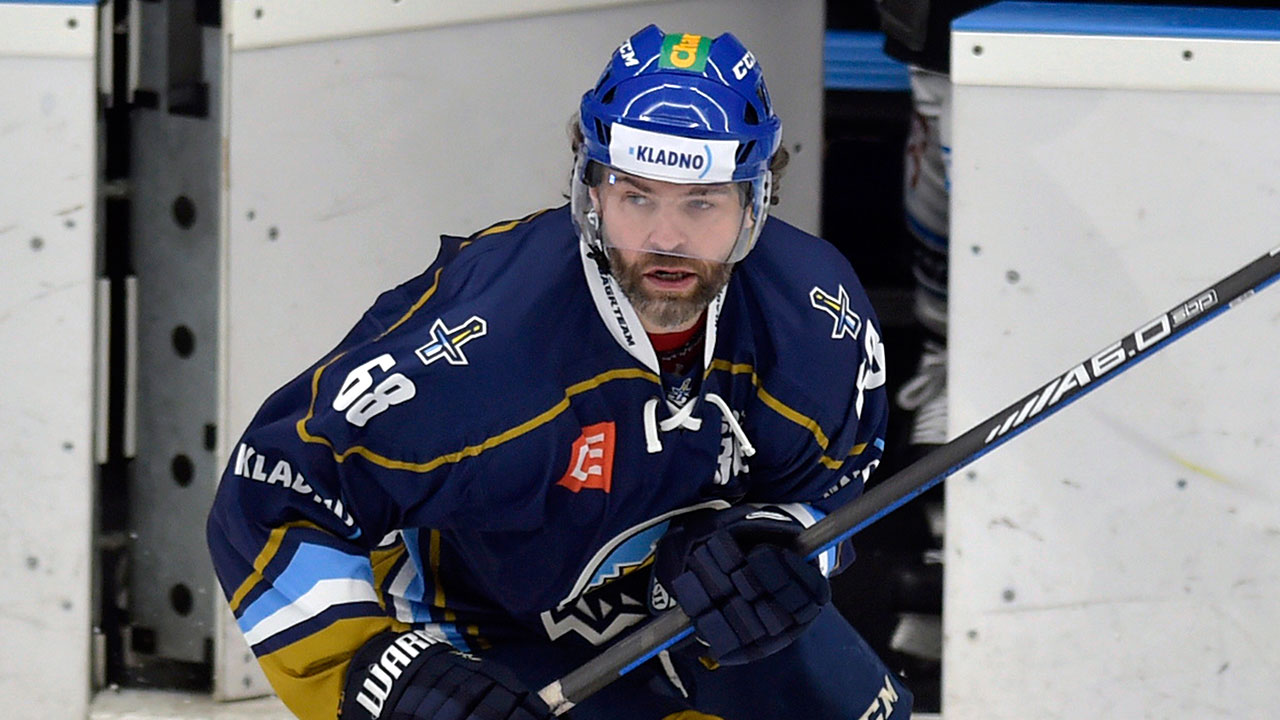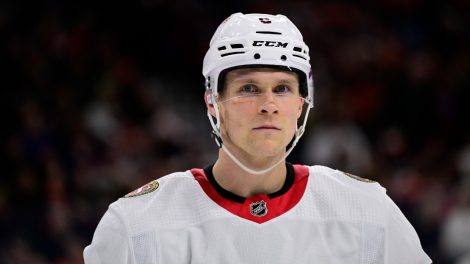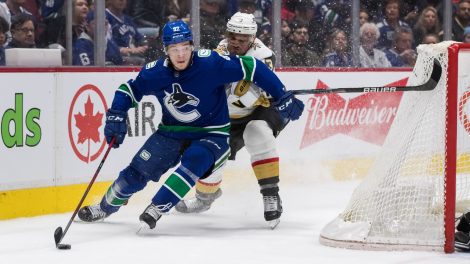It brought him some extra spending money and a surprising amount of notoriety, but Hockey Night in Canada‘s chief play-by-play man Jim Hughson doesn’t miss his side gig.
Calling sports video games, like EA Sports’ fantastically successful and increasingly realistic NHL series, can make a man famous and whip his mind to mush.
“At one point I was doing the EA Sports games, and I had people in the U.S. who would recognize my voice and they’d ask, ‘Do you call real games or just video games?’ ” chuckles Hughson, who voiced the series for a decade. “The work itself was the most tedious I’ve done in my life.”
The B.C. native’s reign as the voice of digitized hockey ended in 2007, when EA struck a marketing deal with ESPN and gave the gig to Gary Thorne. For the title’s two most recent editions, NBC Sports duo Mike “Doc” Emrick and Eddie Olczyk have manned the virtual booth.
A pioneer in the game, Hughson loved the finished product but doesn’t miss the process.
“It was really cool being on the cutting edge because no one had really done it before. The first years I’d done it, there had never been extensive audio in a game. So the producers had no idea how to do it; I had no idea what they wanted me to do,” explains Hughson, who started with NHL 97, which featured John Vanbiesbrouck on the cover.
“We had to think through it together and figure out how the stitching process for phrases would work, how we would do it to make it sound like a natural sentence. If you listen to the early games, we didn’t do a good job of it.”
Hughson’s phrases didn’t stitch together properly. The sentences flowed choppily, and his inflection often sounded unnatural—as if! exclamation points? commas and question marks, were dropped! randomly into, speech. But he and a cadre of producers stuck with it, seeing gradual progress over the years.
“Everything is done in three-word phrases, and sometimes you end them on an ‘up’ intonation. As we got better at it, it sounded like a real play-by-play that was nonstop,” Hughsson, 58, says. “I was proud that we figured out how to do that, and I figured it out in concert with a number of producers.”
Emrick brought his 512-bit vocabulary to EA in NHL 15. The fans demanded Doc, says EA producer Sean “Rammer” Ramjagsingh.
Emrick and Olczyk wrapped up recording for this fall’s NHL 16 in June. Ramjagsingh estimates that the duo spent 14 throat-testing sessions, each seven or eight hours in length, to create their layer of the game last year, but names and phrases must be updated to freshen up each new release.
“It’s a fascinating thing to do because you’re sitting in a studio by yourself, and you don’t have any video action to watch. You’re just using your imagination,” Emrick explains.
“They’ll give you something to do like, ‘OK. Goalie’s pulled. They’re trying to get out of their own end to start an attack, but they can’t get out of their end and the net’s open. Go.’ So you describe that but you can’t use names, because those will be stitched in after, and you can’t use team names because those have to be stitched. And you need to describe the action in four different tones because they want variety.
“By the end of the day, you’ve taxed your mind heavily. But the finished product makes it fun.”
NHL 15 featured 35,000 unique lines of speech, or roughly the amount of one phone conversation with my mother. (Kidding, Ma.)
“It was fun to see people’s reaction and the finished product, but I can’t say it was any fun sitting in the studio doing it,” says Hughson.
The O.G. of NHL play-by-play worked in concert with the game’s producers to build a sound library, recording not only each NHL player’s name but the names of players that could make the cut in training camp, plus all the international players. Times three.
“You’d have to do them all in three intonations—when there’s nothing going on in the game, excited for when he’s about to score, or when he’s going to score the winner in a 3-3 tie,” Hughson recalls. “I’d work until my head was about to explode and then I’d say, ‘I have to stop for today.’
“They wanted to sell new games, so they wanted new phrases each year. After about 10 years of doing it, it got to the point where I had to brace myself for the agony I was going to go through.”
Agony for our amusement. Emrick’s included.
Though he’s only on Year 2 and is admittedly an awful gamer, the 68-year-old gets excited about the add-ons and doodads that contribute to NHL‘s authenticity.
“At some point in the game, a fan comes down the aisle with a tray of drinks, and he sits in the seat and watches the game for a while, then he gets up and leaves. You’ll have a goal scored by the visiting team, and one fan in the visiting team’s sweater stands up and applauds, and the other fans turn around and stare at him,” Emrick says, excitedly. “Those are the fun things to me because I’m not a good game player, but I like watching other people play.
“We had the Detroit arena where I used to have season tickets—I don’t anymore—and they found my seats in the game. They joysticked up the aisle, a certain number of rows from the glass and they found my seats!”
He sounds like a kid with sore thumbs, not an older man with a sore vocals chords.
“Whatever they think of, they can do.”









